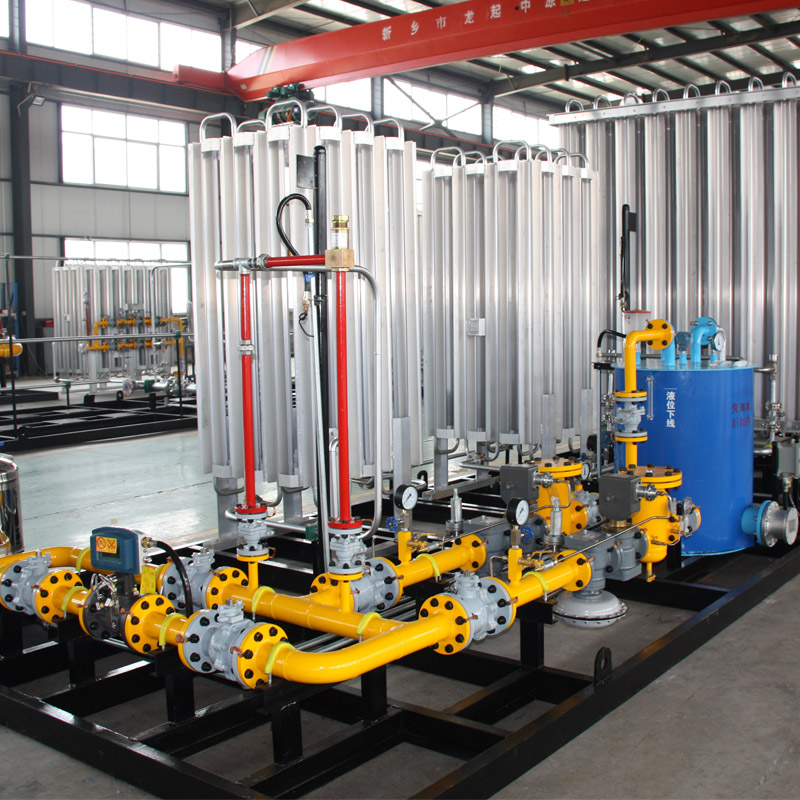
Nov . 16, 2024 21:45
Back to list
pneumatic control valve
Understanding Pneumatic Control Valves A Key Component in Automation
Pneumatic control valves play a crucial role in various industrial applications, governing the flow of air within pneumatic systems. These valves are essential in controlling compressed air, which is used to power tools, actuate cylinders, and facilitate numerous automated processes across manufacturing and production lines. This article delves into the functionality, types, applications, and benefits of pneumatic control valves.
Functionality of Pneumatic Control Valves
Pneumatic control valves regulate the flow of compressed air, thereby controlling the actuation of pneumatic devices. The primary function of these valves is to open, close or modulate airflow in response to signals from controllers. This flow regulation impacts the pressure and speed of pneumatic actuators—devices that convert the energy of compressed air into mechanical work.
When an electrical signal is received, the pneumatic control valve can either direct the air to the intended actuator or shut it off entirely. The precise management of airflow ensures that systems operate smoothly and efficiently, preventing wastage of resources and optimizing performance.
Types of Pneumatic Control Valves
Pneumatic control valves come in various types, each designed for specific applications and operational needs. The most common types include
1. Solenoid Valves These are electrically operated valves that allow for quick on-off control of airflow. Their fast response time makes them ideal for applications requiring rapid actuation.
2. Directional Control Valves These valves manage the direction of airflow in a pneumatic system. They are essential for controlling the movement of actuators, ensuring that machinery can operate in both forward and reverse motions.
3. Flow Control Valves As the name suggests, these valves are used to regulate the speed of airflow in a system. By adjusting flow rates, they help control the speed and force exerted by pneumatic cylinders.
4. Pressure Relief Valves These valves ensure that the pressure within a pneumatic system does not exceed safe operating levels. They act as safety mechanisms to prevent equipment damage or failure.
5. Proportional Valves These valves provide variable control over airflow and pressure, allowing for more precise adjustments throughout operation. This feature is particularly beneficial for applications requiring gradual movement.
Applications of Pneumatic Control Valves
Pneumatic control valves find application across multiple sectors, including
pneumatic control valve

- Manufacturing Many factories rely on pneumatic systems for material handling, sorting, and assembly processes. Pneumatic control valves facilitate automation, enhancing productivity and reducing manual labor.
- Automotive Industry Pneumatics play a significant role in vehicle assembly lines, controlling devices such as robotic arms and pneumatic hoppers.
- Food and Beverage In this industry, pneumatic systems help control packaging, processing, and handling, ensuring cleanliness and efficiency
.- Pharmaceutical Within the pharmaceutical sector, precision and reliability are paramount. Pneumatic control valves help manage sterile environments and automated packaging lines.
- Construction and Mining Pneumatic tools used in construction and extraction often rely on pneumatic systems supported by control valves for effective operation.
Benefits of Using Pneumatic Control Valves
Incorporating pneumatic control valves into industrial processes offers several advantages
1. Efficiency Pneumatic systems, assisted by control valves, can help streamline operations, leading to increased production rates and reduced operational costs.
2. Safety By managing pressure levels and airflow, pneumatic control valves enhance safety within inductor systems, reducing the risk of accidents.
3. Simplicity The design of pneumatic systems and control valves typically allows for easier installation, maintenance, and repair compared to hydraulic or electric systems.
4. Versatility With various types of valves available, pneumatic systems can be customized to fit diverse applications, enhancing flexibility in operations.
5. Environmental Considerations Pneumatic systems are often more environmentally friendly than their electrical counterparts, as they can utilize compressed air produced from renewable sources.
Conclusion
Pneumatic control valves are indispensable components of modern automation, influencing the efficiency, safety, and flexibility of industrial operations. Their ability to effectively manage compressed air flow allows for a wide range of applications, facilitating advancements in manufacturing, automotive, food processing, and more. Understanding and optimizing the use of pneumatic control valves is crucial for industries aiming to enhance productivity and maintain competitive edges in an ever-evolving market. As technology continues to advance, the role of these valves in automation will likely expand, paving the way for even greater innovations.
Next:
Latest news
-
Safety Valve Spring-Loaded Design Overpressure ProtectionNewsJul.25,2025
-
Precision Voltage Regulator AC5 Accuracy Grade PerformanceNewsJul.25,2025
-
Natural Gas Pressure Regulating Skid Industrial Pipeline ApplicationsNewsJul.25,2025
-
Natural Gas Filter Stainless Steel Mesh Element DesignNewsJul.25,2025
-
Gas Pressure Regulator Valve Direct-Acting Spring-Loaded DesignNewsJul.25,2025
-
Decompression Equipment Multi-Stage Heat Exchange System DesignNewsJul.25,2025

